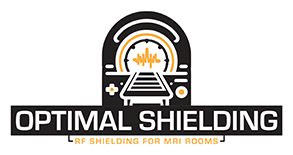RF shielding for MRI rooms consists of esoteric construction concepts coupled with an understanding of physics which is why relying on someone with merely a construction background to install your RF shield can lead to grave consequences. The following content is designed to shed light on these complex concepts to better prepare you for the conversations you’ll be having with your MRI shielding vendor. This information will also arm you with the knowledge necessary to hold your general contractor accountable to the highest standards possible because this is after all your investment at stake, and you should expect and demand nothing but the best product.
Magnetic Shielding
Some MRI rooms may require a magnetic shield which is separate from the RF shield. This shield may be required if you plan on purchasing a 3T magnet or a non-actively shielded magnet because it protects surrounding areas from the magnetic field generated by the scanner. This is especially true if your MRI scanner is near moving objects that consist of ferrous metals such as elevators, cars etc. Magnetic shielding promotes optimal image quality by protecting the scanners magnetic field from electromagnetic interference nearby that can disrupt the homogenous environment an MRI scanner requires. The goal of magnetic shielding is to contain the 5G gauss field lines emitted by the scanner from exiting the scan room and to cancel any exterior magnetic fields from interfering with an already shimmed magnetic field.
Radio Frequency Shielding for MRI Rooms
All electrical components in the MRI room for lighting, outlets, e-stops and exhaust fans must pass through an electrical power filter mounted to the RF shield. All penetrations for data and other systems also require unique waveguides to ensure there is no RF leakage or that electrical isolation is not compromised.
Every utility penetrating the RF shield must use a waveguide. All RF shields come with a specially manufactured door, window, and waveguides for HVAC systems and fire sprinkler. The two most popular shielding solutions consist of galvanized steel and copper panel shields. Please refer to Optimal Shielding’s service page to get more information on the two types of shielding to determine which one meets your requirements and budget.
At the completion of an MRI shield installation an RF integrity test is required to certify the shield and this test requires expensive equipment to conduct. It is recommended that a high performing shield test at 100 DBs of attenuation at a frequency range between 100 to 150 MHz. Additionally, the RF shield cannot come into direct contact with any exterior metal objects that carry an electrical current. It is recommended the RF shield read at 1000 OHMs of resistance at minimum.
Contact Optimal Shielding today if you need more information to prepare you for a successful MRI shielding solution.
